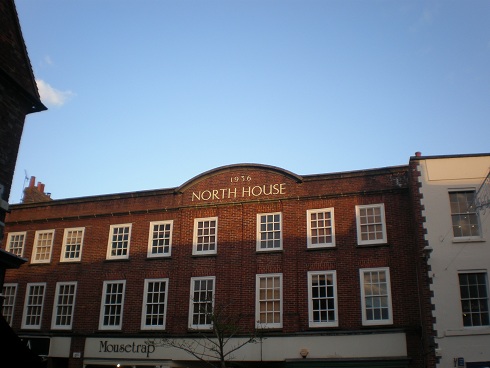By Tim Lambert
Society in 1930s Britain
The 1930s are remembered for mass unemployment. However, there was already mass unemployment in the 1920s in Britain. For most of the decade, it hovered between 10% and 12%. Then, in the early 1930s, the economy was struck by depression. By the start of 1933 unemployment in Britain was 22.8%. However, unemployment fell substantially in 1933, 1934, and 1935. By January 1936 it stood at 13.9%. Unemployment continued to fall and by 1938 it was around 10%.
However although a partial recovery took place in Britain in the mid and late 1930s there were semi-permanent depression areas in the North of England, Scotland, and South Wales. On the other hand, new industries such as car and aircraft making and electronics prospered in the Midlands and the South of England where unemployment was relatively low. The problems of depression and high unemployment were only really solved by the Second World War, which started industry booming again.
Depression and unemployment are one side of the story. But there is another side. During the 1930s, for most people with a job, living standards rose significantly. In 1929-30 a survey in London found that about 10% of the population were living at subsistence level. A survey in 1936 found that just under 4% were living at the bare survival level. Poverty had by no means disappeared in Britain by the 1930s but it was much less than ever before.
Pensions and unemployment benefits were made more generous in 1928 and in 1930. In 1931 unemployment benefit was cut by 10% but it was restored in 1934. Furthermore, prices continued to fall during the 1930s. By 1935 a man on the ‘dole’ was about as well off as a skilled worker in 1905, a measure of how much living standards had risen in Britain.
Even so, in 1939, many children from cities were evacuated to the countryside to be safe from bombing. Many of them had never seen the countryside before. Worse some of them were used to sleeping in their parent’s bed or even under it. Some poor children were not used to sleeping in a bed at all.

Homes in 1930s Britain
In the 1920s and 1930s, a new style of furniture and architecture was introduced. It was called Art Deco and it used geometric shapes instead of the flowing lines of the earlier Art Nouveau. The name Art Deco came from an exhibition held in Paris in 1925 called the Exposition Internationale des Arts Decoratifs.
At the beginning of the 20th century, only rich people could afford electric light. Other people used gas. Ordinary people did not have electric light until the 1920s and 1930s. Meanwhile in the early 20th century vacuum cleaners and washing machines were available but only rich people could afford them. The first electric oven went on sale in the USA in 1891. They went on sale in Britain in 1893. By 1939 there were about 1 1/2 million electric ovens in Britain and about 9 million gas ones.
In 1900 about 90% of the population of Britain rented their home. However, homeownership became more common during the 20th century. By 1939 about 27% of the population owned their own house. Meanwhile, the first council houses were built before the First World War. More were built in the 1920s and 1930s and some slum clearance took place. n Clothes in 1930s Britain
A revolution in women’s clothes occurred in 1925. At that time women began wearing knee-length skirts. In the mid and late 1920s, it was fashionable for women to look boyish. However, in the 1930s women’s dress became more conservative.
After the First World War men’s clothes became less informal and more casual. In the 1920s wide trousers called ‘Oxford bags’ were fashionable. Men also often wore pullovers instead of waistcoats. In the 19th century, men’s underwear covered almost the whole body, stretching from the ankles to the neck and the wrists. However, in the 1920s they began to wear shorts that ended above the knee and sleeveless vests. The first Y-fronts went on sale in Britain in 1938.
Leisure in 1930s Britain
The great age of cinema-going in Britain was the 1930s when most people went at least once and sometimes twice a week. Early films were black and white but in the 1930s the first color films were made. Although it was decades before all films were made in color. Radio broadcasting began in 1922 in Britain when the BBC was formed. By 1933 half the households in Britain had a radio. Television began in Britain in 1936 when the BBC began broadcasting.
Sales of ice cream boomed in the 1930s and many new kinds of n were introduced. These included Milky Way (1923 in the USA, 1935 in Britain), Crunchie (1929), Snickers (1930), Mars Bar (1932), Whole Nut (1933), Aero and Kit Kat (1935), Maltesers and Blue Riband (1936) and Smarties, Rolo and Milky Bar (1937). Meanwhile, Jaffa cakes went on sale in 1927. Twiglets date from 1929 and Penguins were introduced in 1932.
In 1900 children in Britain sometimes left school when they were only 12 years old. However, in 1918 the minimum school leaving age was raised to 14. Between the wars, working-class children went to elementary schools. Middle-class children went to grammar schools and upper-class children went to public schools.
In 1903 a speed limit of 20 MPH was introduced in Britain. It was abolished in 1930. However, in 1934 a speed limit of 30 MPH in built-up areas was introduced. Meanwhile, in 1925 the first electric traffic lights were installed in London. A driving test was introduced in 1934. Also in 1934, Percy Shaw invented the cat’s eye.
Last revised 2024